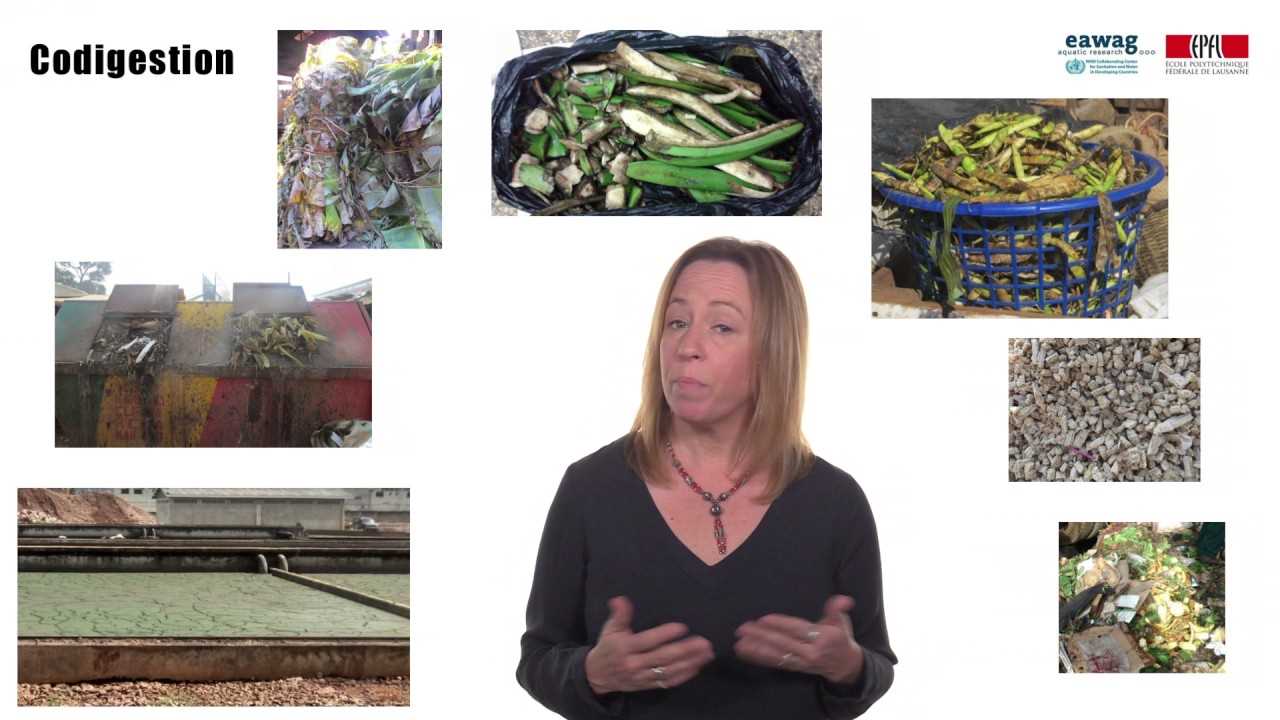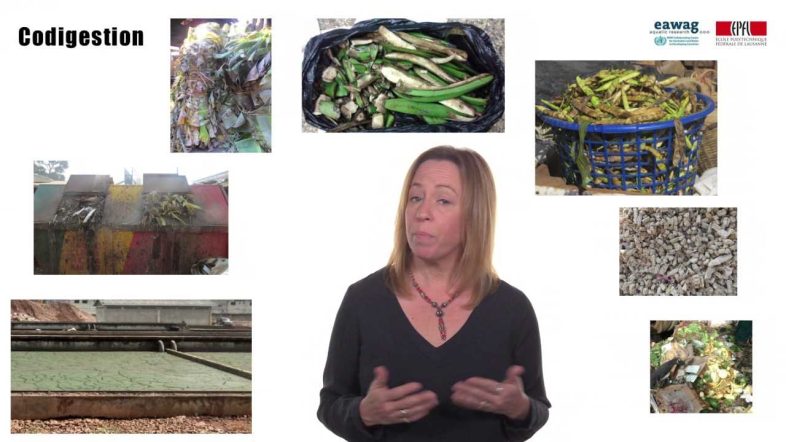Let’s face it, while the topic of anaerobic digestion of faecal sludge, otherwise known as human dung, excrement, poo, poop, shit and excreta, is not a pleasant one. But we refuse to be apologetic to be opening an article about it. It is an opportunity for carbon emission reduction with a host of other advantages for the developing nations which is far too good to be ignored.
There is an excellent training video on the subject, which we provide below for those that like to watch a video. But we do know that some readers prefer to scan text for speed, so we have provided a transcript of the video below the video.
Transcript of the Sludge Digestion Training Video
What do you think makes this cookstove’s flame unique? It is filled with biogas produced by the anaerobic digestion of faecal sludge. Following completion of this module, you will be able to discuss the methane potential of faecal sludge and understand the concerns associated with centralised treatment. as well as a digester design overview This module focuses on the potential applications of anaerobic faecal sludge digestion.
It does not go into detail about the various technologies, other types of anaerobic treatment, or the fundamental science, as these topics have been thoroughly covered in many other publications. If you want to learn more about anaerobic digestion, I recommend starting with the modules on anaerobic digestion in the third week of the Sandec MOOC on municipal solid waste, the Sandec publication on anaerobic digestion, and basic engineering textbooks on wastewater treatment.
In comparison to other more well-established technologies, there hasn’t been much research or implementation of anaerobic digestion of faecal sludge.
So, what are the options?
Let’s start with methane potential, which is the amount of methane produced per gramme of COD and is affected by the sludge’s level of stabilisation.
So, what does this have to do with faecal sludge? We can’t say definitively because there aren’t many results for the methane potential of various types of faecal sludge.
However, one would expect fresh sludge with very short retention times in containment, such as that found in many public restrooms or restaurants, to have a higher methane potential than sludge that has been sitting in a septic tank for ten years, undergoing digestion.
Cranfield University researchers compared the biomethane potential of 11 pit latrines, two public toilets, and ten portable or container-based toilets to primary wastewater sludge in these preliminary results.

They appear to confirm our intuition, but based on that, we would have predicted that the public ablution blocks would have a higher methane potential. This highlights the need for additional research as well as more results to confirm whether the results are due to factors such as the seed used in the test.
This graph [see video] depicts the variation in methane potential based solely on the pit latrine samples used in the study. This is also not surprising given the variability of faecal sludge. It also highlights the need for additional research to better understand the methane potential of faecal sludge.
So, what does this mean for anaerobic faecal sludge digestion? I’m going to divide implementation into three levels based on scale, degree of centralization, required management level, and operational skill. All of these categories are centralised at a high level, such as digesters, which are commonly found at large centralised wastewater treatment plants for the digestion of wastewater sludge.
Medium refers to the size of a community. Reactors that have not been fully optimised for operational parameters and treatment performance, necessitate less operation and capacity.
And low is household-level systems seen in rural areas, which are small, passive systems primarily treating manure and food waste with some faecal sludge co-treatment. Millions of implementations have occurred in India and China, with mixed results when applied in other areas. I’m not going to go over household examples in this module because they’re unrelated to our focus on dense urban areas. So, what about the possibility of running large-scale centralised anaerobic digesters for faecal sludge? It hasn’t been done before, but one of the first questions to ask when evaluating feasibility is whether there is enough methane potential.
These are some fundamental factors to consider when designing an anaerobic digester. First, you must determine the temperature of the surrounding air. Then you have your reactor and you know what temperature you want it to run at. For instance, mesophilic. You can then choose your solid’s retention time based on your treatment goals.
You’re well-versed in loadings. What’s going to go into the reactor? The sludge’s total solids concentration and mass loading.
You are also aware of the sludge’s degradability. Based on this, you can calculate the reactor volume as well as the amount of biogas that will be produced, including methane concentrations.
You can then determine whether the methane produced is sufficient to generate enough heat to bring the reactor up to the required operating temperature. The issue is that we don’t have reliable data on the degradability of faecal sludge.
Temperature is important because it influences the growth of methanogenic bacteria. At lower operating temperatures, retention times must be much longer, or they will not be able to grow in the reactor. They’ll be washed out, and you won’t get any treatment.
Primary wastewater sludge is approximately 75% to 85% degradable. And secondary sludge, which accounts for roughly 70% to 80% of the total. If the sludge is not biodegradable enough, there will be insufficient methane production to heat the reactor. This is especially important if you want to operate at thermophilic temperatures to reduce pathogens.
Further research is needed to determine the required temperatures and SRTs for the digestion of faecal sludge.
Another challenging issue is that anaerobic digestion is easily disrupted. And, as we all know, faecal sludge varies greatly. What can cause a reactor to malfunction? Toxic metals such as nickel or zinc, phenolic compounds, or even high levels of free ammonia PH, a buildup of volatile fatty acids, fats, oils, and grease, and shock loadings all contribute to a rapid change in digester contents.
It is a management nightmare if a large-scale centralised reactor fails. All of this could imply that anaerobic digestion of faecal sludge at a centralised scale could only be used in conjunction with co-digestion with other organic waste streams that are more degradable.
And in low concentrations compared to the other organics to reduce the variability of faecal sludge entering a reactor. Brewery waste, spent grain, market waste, and even wastewater sludge are all examples. Community-scale digesters are simpler to operate because they are not optimised for space, temperature, gas production, or treatment capacity, but they provide a potentially better option than septic tanks or other types of anaerobic treatment because they are designed to capture biogas for resource recovery and to reduce greenhouse emissions.
Community-scale systems have been implemented by CDD and BORDA in India, Nepal, and Tanzania. Although there are not yet enough operational results to make detailed design recommendations, they have been sized up to a maximum of a 6-metre diameter based on solids concentrations, collection capacity, and frequency of emptiers.
Effluent and solids treatment requires solids and hydraulic retention times. This is a diagram of an anaerobic digester built and operated by BORDA in the Mlalakua neighbourhood of Dar es Salaam, Tanzania. The plant’s capacity was estimated using data from the operation of a similar reactor in the Kigamboni neighbourhood, which collected and transported faecal sludge for the community, as shown here.
The size of the digester was also determined by the available land area and the desired level of complexity of the operation, allowing it to operate on a community scale. The resulting design capacity is five cubic metres per day, or approximately 20,000 population equivalents. This is the entrance road. First, there are 30 square metres for the receiving station where the trucks will discharge, followed by another five square metres for sludge screening.
The dome is 50 cubic metres in size, with the expansion chamber adding another 21 cubic metres.
The reactor liquid is then routed to an anaerobic filter. The sludge is transferred here to drying beds, which take up an additional 55 square metres. The liquid from the drying beds and anaerobic filters is then routed here to a banana plantation. which takes up an additional 170 square metres. Here are some images of how it appears.
The entrance to the facility. The receiving area. The dome and expansion chamber are hidden behind a bar screen. The banana plantation and the covered drying beds. For more information, please visit the CDD and BORDA websites, as well as this biogas curriculum, a tool for trainers to teach masons and technicians about the complexities of gas-tight digester construction.
In summary, the advantages of anaerobic digestion include lower sludge and footprint requirements when compared to aerobic treatment, lower methane and sludge for resource recovery, and the ability to destroy pathogens depending on operating conditions.
One disadvantage is that the process is easily disrupted. It works best in controlled and consistent environments and requires knowledge and skill to operate. This module taught us about the methane potential of faecal sludge, as well as the design and operational issues associated with centralised and decentralised treatment.
Thank you for coming with us. We’ll see you next time.




